#Permanent Collection
Explore tagged Tumblr posts
Photo

Edward Hopper’s oil painting Morning Sun, 1952, is part of Columbus Museum of Art’s permanent collection. The model for the painting was his wife, Jo.
#edward hopper#painting#columbus museum of art#permanent collection#ohio museum#art#portrait#portrait painting#famous painting#morning sun#contemplative painting
24 notes
·
View notes
Text
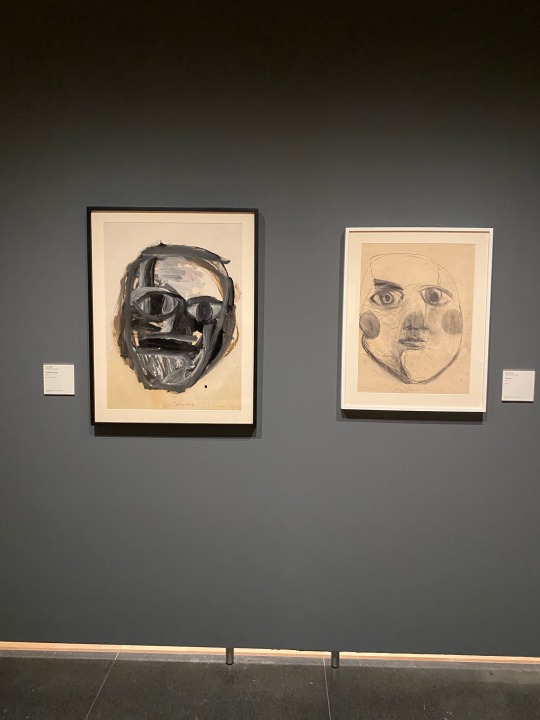
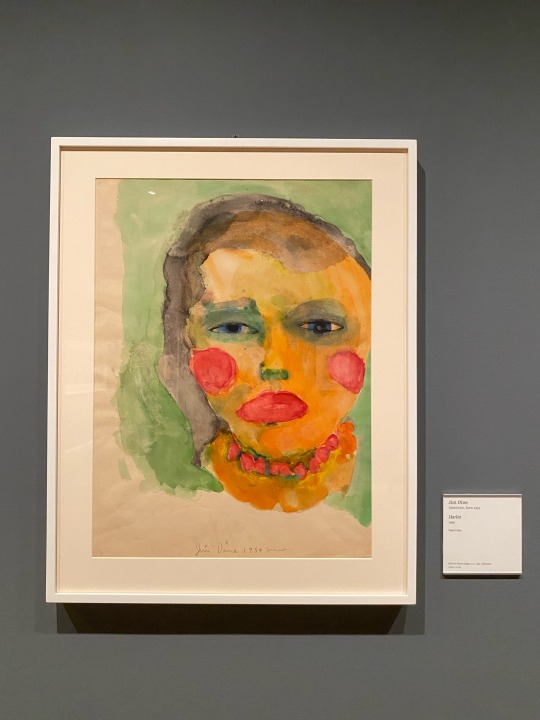
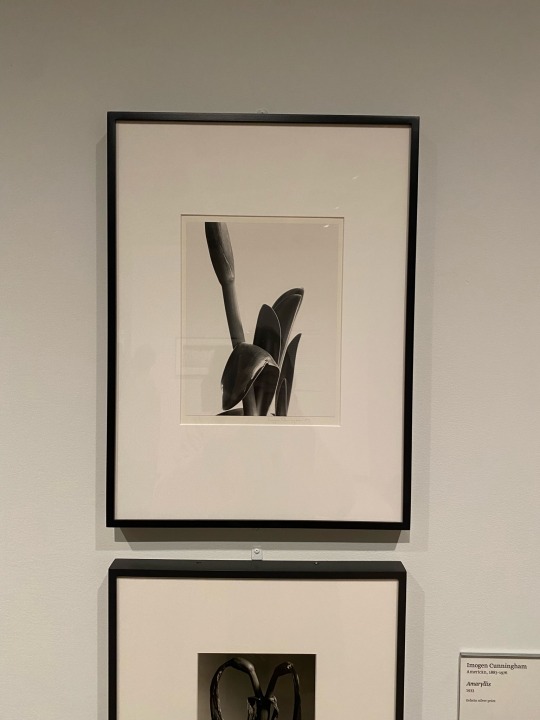
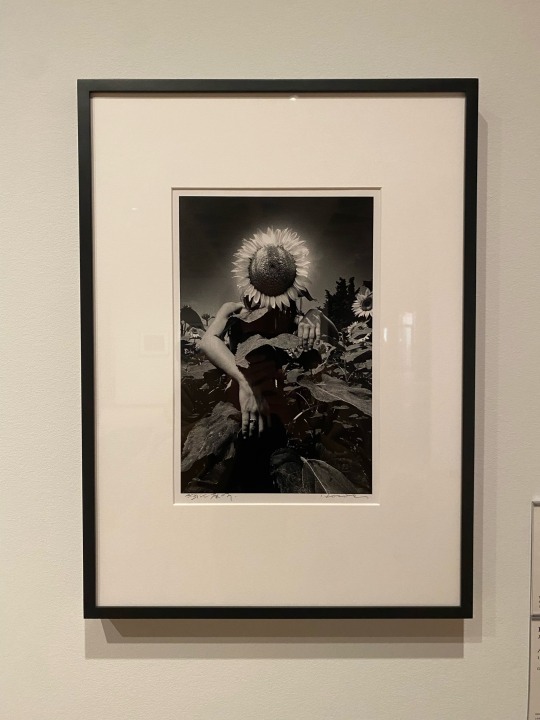
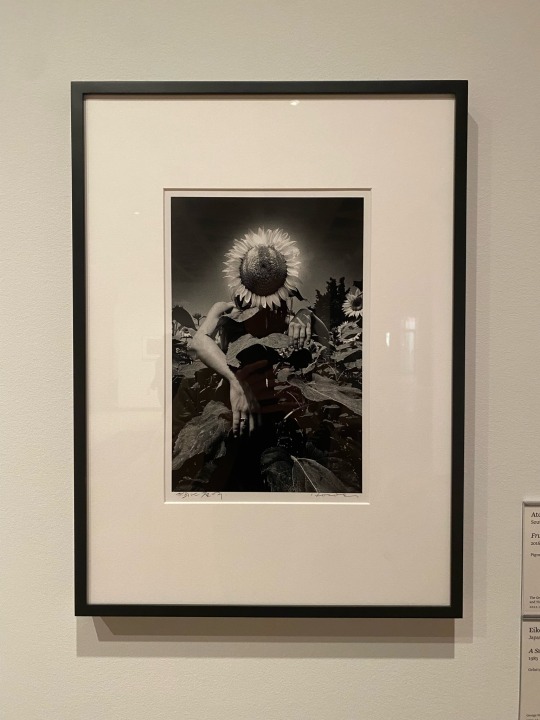
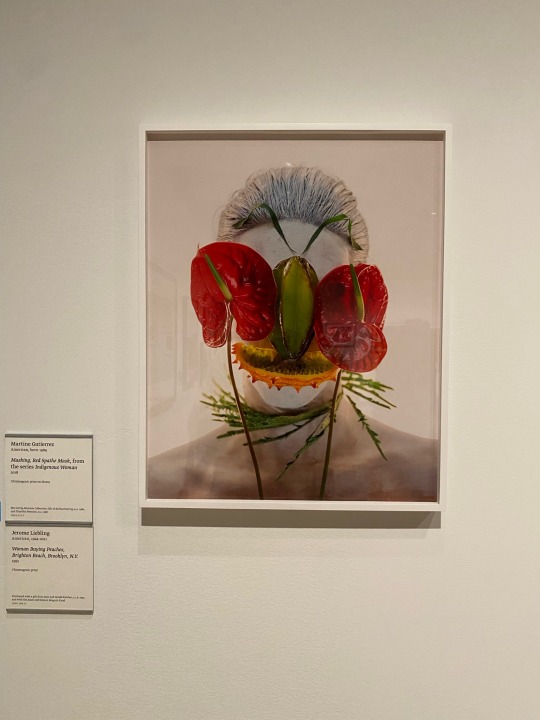
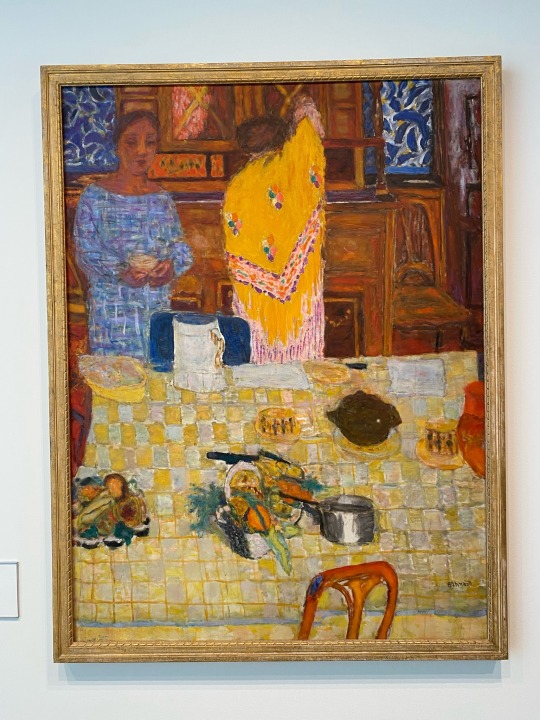
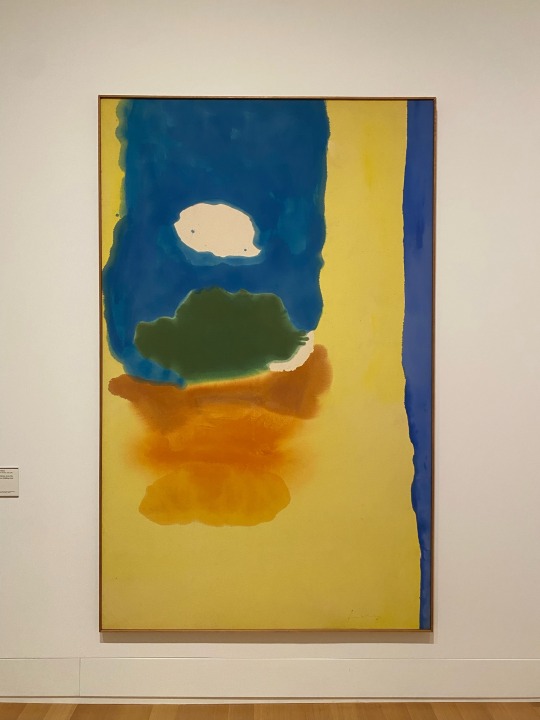
Yale University Art Gallery, permanent collection, May 2025, New Haven
2 notes
·
View notes
Text

art by Lauren
SOLNAER THE DESTRUCTION
Solnaer is fierce, arrogant and charismatic. Prior to his life as a Vadya, Solnaer was known for his aggressive and near-sadistic combat abilities, which brought his tribe many victories over the years. Solnaer was once the kind of person who enjoyed group activities and making friends, but after tragedy struck, his anger took over. It was because of his anger, his strength, his ferocity, that the yaidaseyii chose him as a Vadya.
Solnaer possesses a great intellect which he focuses on strategy and philosophy, and, despite his aggression, is quite patient and cunning. He knows how to use his anger constructively and when not to. Despite this, he can seem rather spontaneous in his decisions, as he rarely shares them with anyone else. A pessimist, Solnaer sees people as inherently prone to violence, and dreams of a world where such negative feelings can be stamped out.
He is the older brother of Jastfaer, Vadya of the Long Winter.
2 notes
·
View notes
Text
Alice Waters and Fanny Singer: Northern California Legacy Spotlight

Alice Waters needs no introduction but we'll introduce her anyway. In 1971, back from travels in the UK, France and Turkey, and channeling the counterculture, she opened Chez Panisse in Berkeley. The restaurant quickly became an icon of the farm-to-table movement with its menu of seasonal ingredients sourced directly from local farmers. Waters has remained at its forefront, expanding the movement through projects like Edible Schoolyard and the Chez Panisse Foundation. Despite her global success, Waters is for us one of Northern California’s true visionaries of the local, and it is hard to imagine our regional cuisine without her.
We spoke with Alice alongside her daughter Fanny Singer, an accomplished art critic, writer, new mom, and founder of Permanent Collection, a line of handcrafted homeware that tells the stories of the people who make each piece.
Studio AHEAD: How do you sit?
Alice Waters: I sit at the table and I like to sit in a chair. I love to be in front of the fireplace. It’s very important to be seated at a table. It can be oval or round. It doesn’t matter as long as everybody’s there together.
Fanny Singer: Sitting is something I either do a lot of or very little depending on the day. I have a one-and-a-half-year-old and spend a lot of time cajoling her at dinnertime into her seat. It’s become a new topic of conversation: How do we sit? How do we actually eat? How do we commune over this meal, because that was a very significant part of my childhood.
But the last year-and-a-half of having a baby, you’re standing eating out of the refrigerator, and not taking a moment to sit because you’re in between things. Recently we’ve made a real point to sit together with [Fanny’s daughter] Cecily, who loves to eat thankfully. We sit on either side of her and light candles, which she loves. She goes “candles, candles, candles” if we forget. So after a year-and-a-half of very frenzied never sitting down for a proper meal, we’ve reintroduced a real sense of ritual in how we wind down from our day and enjoy this moment of communal eating together.
Studio AHEAD: I love that both of you have fire—Alice with the fireplace and Fanny with the candles. It’s warmth. Fire always has that effect of calming.
Alice: I light candles, too! It’s the beauty of the light. When you light a candle at the table it’s like a ritual. You all are there. And in candlelight everyone looks good.
Studio AHEAD: Do ideas of space—of people being together in a room, whether at one of your restaurants or at home—influence your approach to cooking? To laying out a menu?
Alice: I love the connection between the kitchen and the dining room. It means that the people who are dining [at Chez Panisse] can see where their food comes from, and they can watch if they want to go into the kitchen. Just take a peek before they sit down. They're welcome. It’s not like you’re trying to hide something. There’s a big fireplace in the kitchen, so most people do want to take a look.
Fanny: I’m so fascinated by that question in terms of thinking about it relative to what is cooked. Permanent Collection recently launched a new project called the Platter Project. Most of the products that we make are kept in stock. We reissue them. The idea is to keep good design readily available. But we thought it would be nice to work in a more limited-edition capacity with artists and artisans to make something that stood apart from a design perspective or just felt different.
When I was thinking about the form that this idea could take, the platter was the only idea that made sense. There is something about that shape, generally oval or circular or round, that has this sense of generosity and compatibility with food. It’s the way we plate and the way that plates then convey accessibility: a round plate can be reached into and served out of from every side. There's always a family-style relationship to service and dining in our families and also at Chez Panisse.
I mean even the downstairs, which is more formal, doesn't feel like there's not a permeability. There’s an invitation to taste and share that’s always been the philosophy when I cook, too. My tables and those spaces in which I've cooked have varied widely over the course of my life, from graduate school kitchens—tiny, fluorescently lit spaces that my mom suffered through visits to, but always brought candles—to the home that I live in now in Los Angeles. I feel like platters and those shapes that we bring to the table are transcendent. There’s always a beauty to be found in how we bring food to the table.
Alice: I always love a big bowl of usually a fruit in the middle of the table. Whatever is in season. It’s full of oranges right now, apples. You’re probably going to eat some of it at some point but it’s so nice to see something beautiful when you sit down.
Studio AHEAD: I love at Chez Panisse you have the copper plate with the fruit for dessert. It’s an invitation to sharing. It’s changing boundaries.
We recently did an interview with Nobuto Suga who talked about different trees suggesting different objects to make with them and being true to the local wood. Fanny, I think this relates to Permanent Collection with your focus on the people who make what you sell.
Fanny: Absolutely. It was the raison d'etre of what we do: to bring the people who craft the things that we make into the foreground. It’s what distinguishes not just Permanent Collection, but any products that are artisanally produced and not mass manufactured. It’s evidence of the hand that makes the things.
The Japanese ceramicist who makes our beautiful green ceramic plates… the plates are immaculate, but there's always some slight difference. There's not a sense of them being pressed into a mold by a machine and turned out in perfect uniformity.
It’s the wabi sabi approach to setting the table and thinking about the things that you're putting into your mouth and the context in which they are delivered to you—the ethos around production for us absolutely stems from that. You want to understand the hand that's behind the carrots as much as you want to know the story of the hand behind the dishes.
Alice: Of course, the color of the dishes is always important to me. What I'm putting on the plate is enhanced by the color of the plate. It’s great to have all different shapes and cups. I like those charming irregularities.
Fanny: That’s always been the defining philosophy of Chez Panisse: that very, very little needs to happen on the culinary side of things if what you're cooking with has been grown by people who are working in concert with nature, and that that connection between the people who grow the food and the natural world is something that you can taste, becomes manifest on the plate.
Studio AHEAD: Fanny, you have a PhD in art history. Has this guided how you choose which craftspeople to work with? The sculptural quality of the pieces is undeniable. I'm also curious about the name Permanent Collection, because so much of what the farm to table movement pays attention to is seasons. It's the opposite of permanent.
Fanny: I think I would quarrel with that or at least say there isn’t an exact one-to-one correlation in terms of how we think of the permanence of what we have on the table versus the perennial or the always changing nature of nature and agriculture.
There’s a deep sustainability infused in both, to have things that are heirloom quality that will last forever in your home. Objects that can be passed down from generation to generation are truly in tune with nature in the same way that tending the land and caring for the land displays that same respect and reverence for not wasting, not extracting totally.
That said, how could my PhD not play into it? I mean, I spent the better part of my professional life thinking about art and writing about it. Not just in my PhD, but also as an arts critic and culture reporter. It's part of what drew Mariah Nielson and I to one another. What first started Permanent Collection was this idea that we had really honed our sensibility and also sensitivity to what makes good design and good art. There was something in all that cumulative time of observing and learning that gave us maybe not a talent per se but an openness and an ability to discern what makes something feel like it might be timeless or it might resist trends or fads. That’s where the permanent in Permanent Collection comes in. It was meant to echo that ethos that governs how things are brought into the permanent collection of museums.
They have to stand. They have to prove they will stand the test of time and that they will be good examples of design at a certain time. They will teach us about what people cared about in that moment.
Alice: I think about what I’m using in my everyday life and people think that there are some things that are too precious to use. You put them in a cabinet over there, you never drink out of those beautiful glasses or one of them might break. I just feel like it's such a shame to not remember the person who gave it to you.
I'm just holding this sterling spoon. It was given to me by a friend in Ireland, and every time I use it, I think about her. The same way with my cafe au lait bowls; they're all different, but they come to me at different times in my life from different people. They always bring me a kind of sense of comfort and connection. I love that.
I think what Fanny's doing with Permanent Collection is helping to make that available to people in their everyday lives: the colors that they choose… to bring that beauty back to the table.
Studio AHEAD: Can you share a memory you have with a specific kitchen tool?
Alice: I think it’s a mortar and pestle for me because I make, every day probably, a vinaigrette. I always take a little bit of garlic and use that Japanese mortar and pestle that's grooved. Then I put my vinegar in, let it marry, calm the garlic down.
Fanny: Of course mine is the same tool. We made a mortar and pestle called Alice's Mortar and Pestle, which was an homage to the ones that were ever present in my mother's kitchen. The one that we make for Permanent Collection is made by a wonderful potter in Northern California called Colleen Hennessey.
I make salad dressing in it on a daily basis. It is also a tool that has this relationship to the huge mortar and pestle of Lulu Peyraud at Domaine Tempier who is my mom's mentor and a kind of surrogate grandmother to me. She used her mortar and pestle every day, too.
It was a much more rustic, almost molcajete-looking mortar and pestle, and she would use it to make aioli. She would pound the garlic and then bring the whisk. I think she would use the old school technique of whisking the olive oil with a little piece of potato on the end of a fork. [Alice laughs.] At least I remember seeing her doing that when I was little. There were so many other sauces that she would make in there, whether it was pounded anchovies or black olive tapenade. Or the monkfish liver, bready, aioli-y, delicious sauce that's made to add into bouillabaisse.
Studio AHEAD: Alice, you’ve spoken many times about the influence the Montessori School had on you. How do you follow recipes while also being open to experiment and imagination?
Alice: I have to say that I'm not somebody who follows recipes. I mean, I learned to cook from French cookbooks, but very, very simple ones like Elizabeth David's and Richard Olney's books. I liked knowing I could look at a longer recipe if I wanted to, like Julia Childs who could make it work.
But I'm looking mostly at the ingredient and what it needs to make it really something special at the table. Maybe it's just a tomato and needs vinaigrette, but maybe it wants to be stewed or made into a sauce. I'm sort of just letting the food speak to me.
Maria Montessori’s greatest gift was understanding that our senses are pathways into our minds. When you're not touching and tasting and smelling and looking at beautiful things… she wondered why the children who lived in poverty and hunger back in the 1880s didn't learn the way other children did in school. She created a way of learning by doing, a way of engaging children at a very early age with smell and taste and touch.
Studio AHEAD: This leads to my last question, which is that recently in a New York Times interview you talked about the tactile richness of food. Are you telling us to eat with our hands?
Alice: I certainly am! I don’t think I can eat a salad with a fork. I'm always picking up the leaves and putting them in my mouth. But there is something absolutely important about feeling and not just fruit. Just being able to touch the ingredient, like a string bean and dip it into the aioli or whatever you're doing and you're engaged in a very immediate way. You're not letting that fork in between you and the food. I eat that way all the time, even at the restaurant when I'm a guest. I think people around the world have always used their hands in some way when they're at the table. Something about the fork can get in the way.
Studio AHEAD: I love that. The fork can get in the way. That's my new motto when I'm eating with my hands.
Fanny: That's also Cecily’s motto!
Studio AHEAD: I was going to say. How has it been watching Cecily eat? Are you eating with your hands more?
Fanny: Absolutely. I'm not sure I ever stopped with my hands. Our family has always been a family of picking food up and touching it and sort of getting a sense of it. The tactility of it is the most immediate reaction. To pick up a lettuce leaf and to try it, or even when you're cooking a steak you're touching it to see, Is it done? Is it too rare? I watched my mom cook by finger-feel almost more than with implements in a way. It was the intuition around whether something was properly prepared or not.
So fingers are important utensils in our house. Cecily is learning how to use spoons or what she calls "boons." I'm not trying to rush her. There's a lot of intelligence in the tactility and the feeling of texture that helps you understand whether something is juicy or dry or liquid or solid.
I think it's part of the education of how you use your senses and how you eat.
Photos by Ekaterina Izmestieva
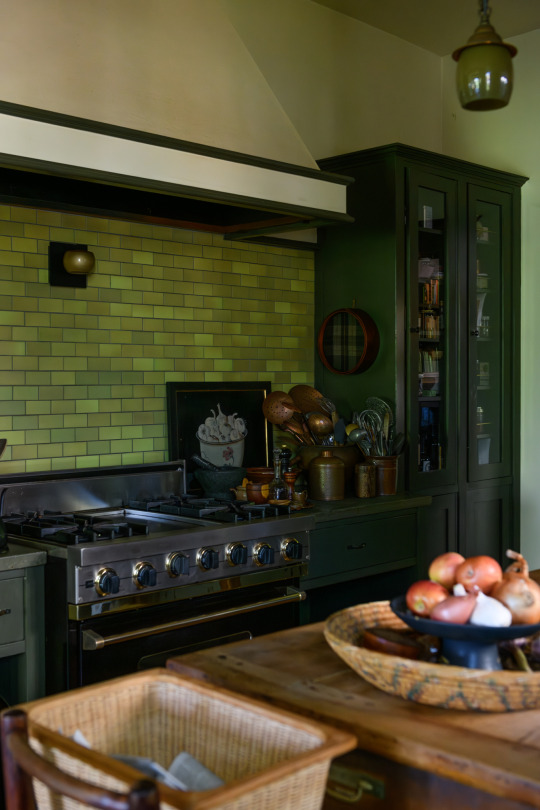
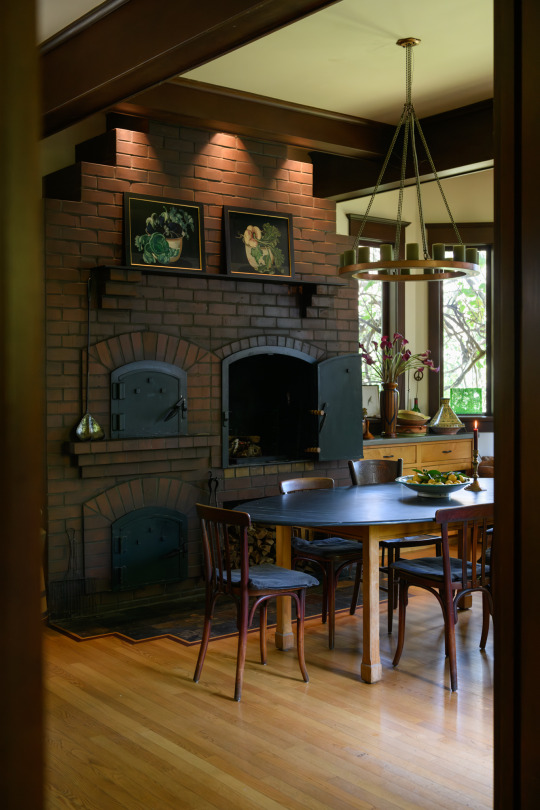


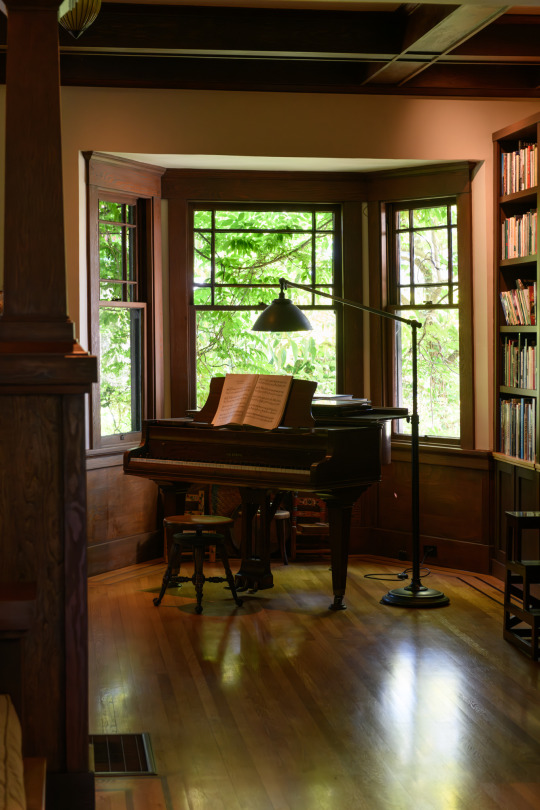
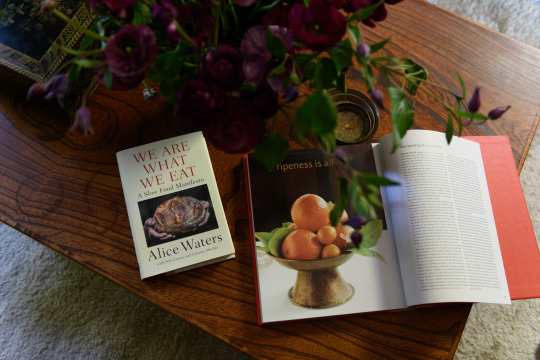
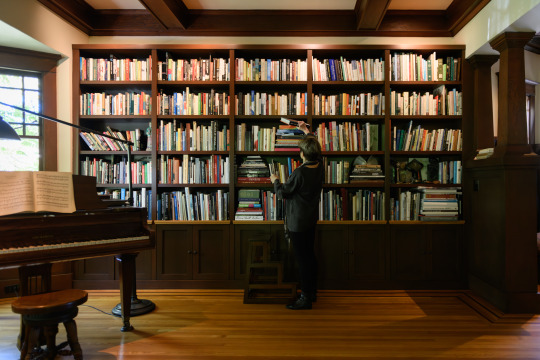
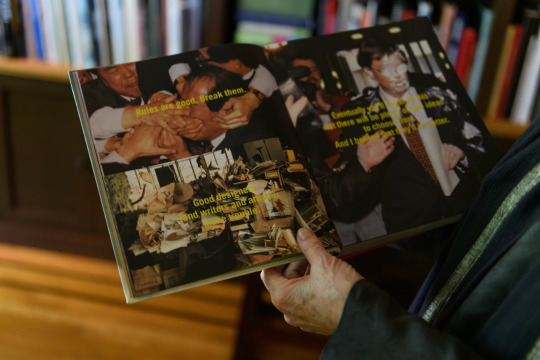

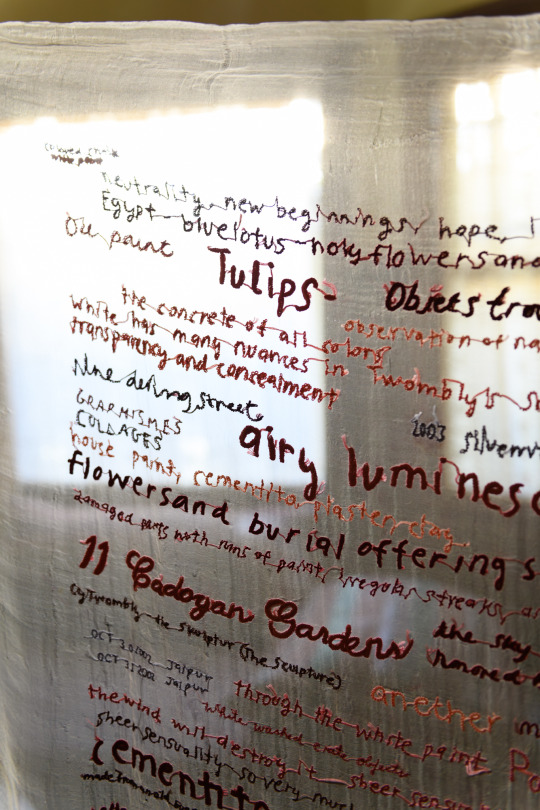


#alice waters#fanny singer#permanent collection#studio ahead#northern california#studioahead#california#san francisco#berkeley#chez panisse#edible gardens
2 notes
·
View notes
Text
Edie Fake: museum acquisition
[vc_row type=”in_container” full_screen_row_position=”middle” column_margin=”default” column_direction=”default” column_direction_tablet=”default” column_direction_phone=”default” scene_position=”center” text_color=”dark” text_align=”left” row_border_radius=”none” row_border_radius_applies=”bg” overflow=”visible” overlay_strength=”0.3″ gradient_direction=”left_to_right”…
#Edie Fake#museum acquisition#permanent collection#Pierpont Morgan Library & Museum#press release
0 notes
Text
historical drama/sitcom where two gay best friends (woman and man) get lavender married--and proceed to spend the Fancy European Honeymoon their parents paid for acting as each other's wingman
#and hijinks ensue. obviously.#BONUS POINTS if they're gender nonconforming/questioning/trans coded#back at home they'd get dressed up then switch outfits in the taxi on the way to the gay club#now that they're married/on vacation in a new country they just wear what they want#he already has a glamorous collection of silk dressing gowns but she's the one who drags him out to buy a closet full of evening gowns#he tries to throw his suits out to make closet space and she steals them for her own wardrobe#also i think they should be a fun mixture of supportive and Cattily Judgemental about each other's dating decisions#just for funsies#like when your bestie is making a mess of their love life but you're in no position to lecture them bc youre WORSE#no wait wait wait#FINAL SEASON they both realize they're trans and move abroad permanently--where they each assume the other's legal identity!!!#SERIES FINALE: a joyful double wedding--wherein they lovingly divorce each other#and (under their switched identities) legally marry their longterm partners
29K notes
·
View notes
Text


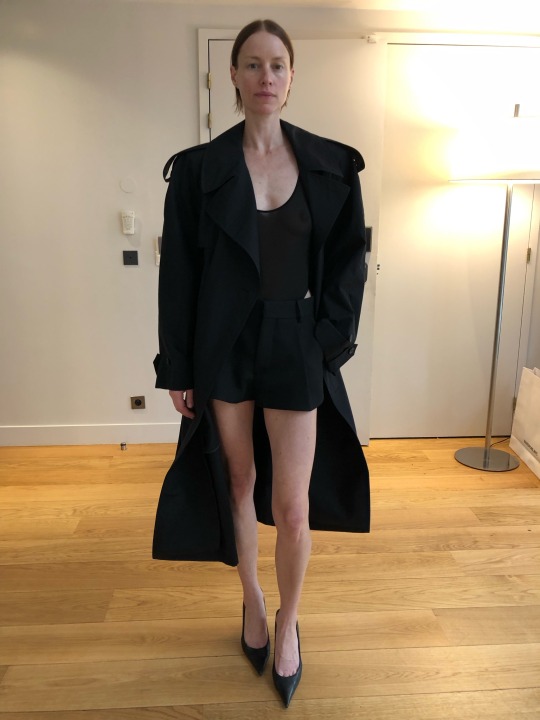
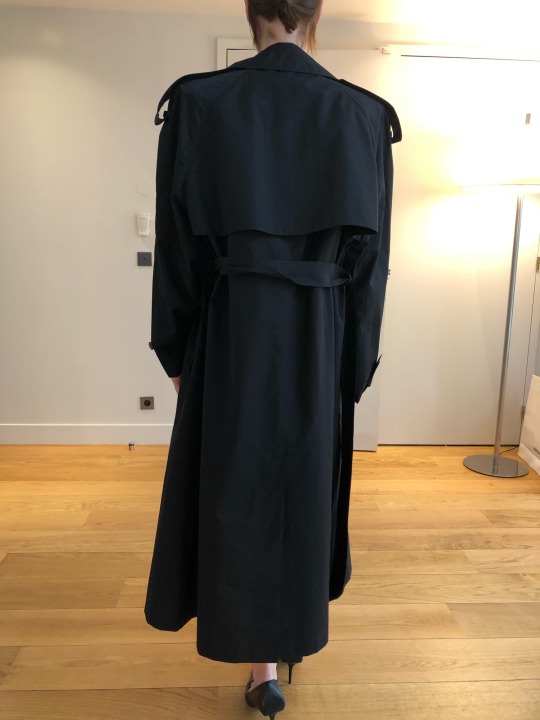

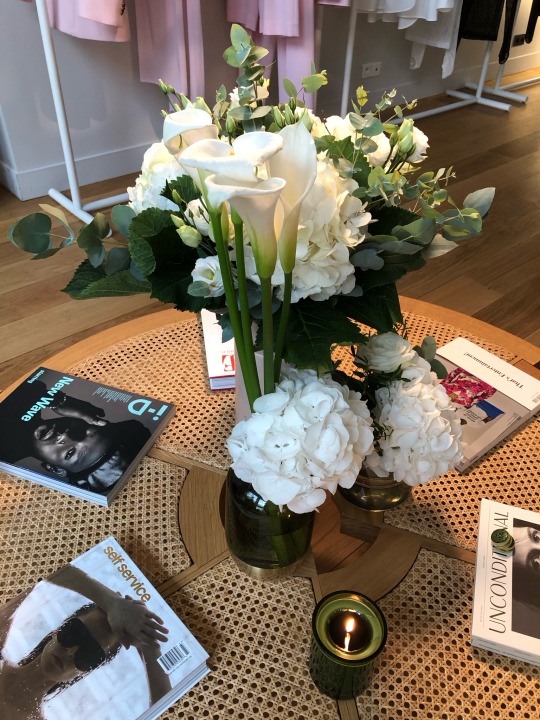
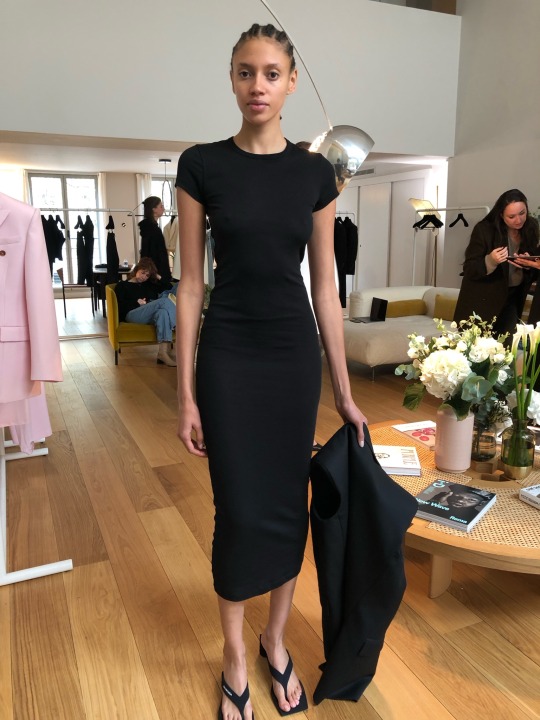

WARDROBE NYC
#wardrobe nyc#newyork#release20#ss25#permanent collection#update#paris fashion week#pfw#worldwide importers#buying tour#forhighenduser
1 note
·
View note
Video
"The Virgin Mary" (1700) - Doxaras Panayotis (1662 - 1729) by Tilemahos Efthimiadis Via Flickr: Doxaras Panayotis (1662 - 1729) The Virgin Mary, π. 1700 Oil on canvas, 43 x 32,5 cm Permanent Collection of the National Gallery, Athens, Greece. --- Παναγιώτης Δοξαράς (1662 - 1729) Παναγία, π. 1700 Λάδι σε μουσαμά, 43 x 32,5 cm Κληροδότημα Β. Ευδομαδόπουλου Μόνιμη συλλογή της Εθνικής Πινακοθήκης, Αθήνα.
#dvd:photos11#Εθνική Πινακοθήκη#πινακοθήκη#Greece#National Gallery#gallery#art#τέχνη#ζωγραφική#painting#museum#μουσείο#Αλέξανδρου Σούτσου#Alexandros Soutzos#Ίδρυμα Ευρυπίδη Κουτλίδη#Euripides Koutlides Foundation#μόνιμη συλλογή#permanent collection#Doxaras#Panayotis#The Virgin Mary#Oil#canvas#Παναγιώτης#Δοξαράς#Παναγία#Λάδι#μουσαμά#Hellas#Athens
1 note
·
View note
Text
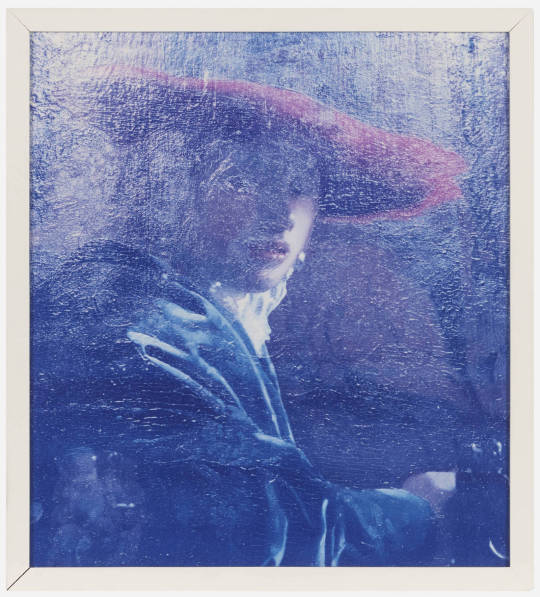
Tim Davis' Permanent Collection series captures the presence of light and reflection as you stand in front of some of the iconic paintings in museums around the world, and reproduces them at full-scale.
This print of the National Gallery's Vermeer, Girl with a Red Hat, (Permanent Collection), 2003, is coming up for auction on 1 Aug 23.
0 notes
Text
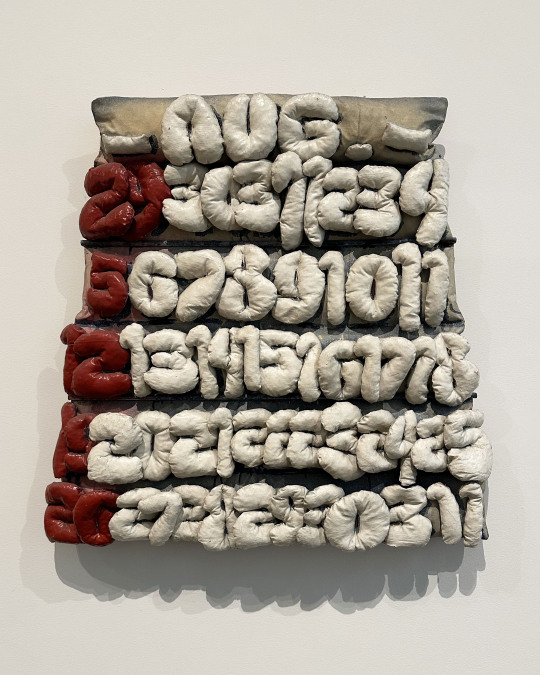
Claes Oldenburg’s Soft Calendar for the Month of August, (Acrylic on canvas filled with foam rubber), pictured above, is currently on view at The Metropolitan Museum of Art.
From the museum about the work-
Contradiction animates Oldenburg’s sculptures of everyday objects. In works such as Soft Calendar, what is hard is made soft, what is small is made large, and what is flat is made three-dimensional. Stuffed fabric sculptures like this one originated in 1962 as props in Oldenburg’s art events, or Happenings, and evolved into independent works. The giant numbers here are sensuously rounded and pillow-like. Their overlapping arrangement asserts their volumetric nature. Each Sunday is called out in brilliant red, while the remaining days of the week are coated in white enamel.
Photographic documentation suggests that Soft Calendar was assembled and painted by Oldenburg and his partner, Patty Mucha, at Green Gallery in 1962.
#Claes Oldenburg#Sculpture#The Metropolitan Museum of Art#NYC Museums#Permanent Collection#Art#Soft Calendar#The Met#August#Calendar
2 notes
·
View notes
Text
I found out recently on a trip to the zoo that bats have their muscles tensed as their ‘relaxed’ state, this is what allows them to hang upside down without falling as they would need to consciously ‘tense’ their muscles to let go.
I’ve decided to apply this to Night Lords as a bit of geneseed fuckery. Part of what makes them seem so dangerous is that their most relaxed state looks to outsiders like they’re incredibly tense, so people see them ‘relaxed’ and assume they’re actually relaxed when in fact that Night Lord is ready to go and is likely about to flay you.
On the flip side a Night Lord that looks like he’s holding a lot of tension is probably incredibly calm, a Night Lord tensing up around you would mean he doesn’t view you as a threat or trusts you to watch his back (this is rare for obvious reasons). It has the added advantage of giving them incredibly grip strength and meaning they can hang onto something for hours at a time.
#I am playing it a bit fast and loose with my terminology and interpretation of bat biology#but I just need you all to see the vision#You notice how Sev comes off as cool calm and collected at all times#yeah he’s actually incredibly stressed at every waking hour#I’m not sure how this interacts with the fact they have human shaped muscles#probably just permanent knots in their shoulders or maybe they only get those from forcing themselves not to be tense at all hours#warhammer 40k#wh40k#warhammer 30k#wh30k#night lords#space marine husbandry#why not
102 notes
·
View notes
Text




CHOOSE YOUR COUNTRY: Loesis
Loesis is the strongest of the veruna countries. Known as the center for development and advancement among the veruna, Loesis secured its position of power through strategic alliances, mass development of weapons, and through conquering smaller nations. Loesis built its kingdom by stealing and destroying the yaidasoula, or the Eternity Flowers, from neighboring tribes until there were none left. Its rise to power was a struggle, as other veruna groups tried to get the upper hand. The tribes that would ultimately become Loesis secured their place by keeping neighboring ildrat at bay. This would eventually lead to the Loesian - Alsalian feud in the centuries to come.
The people are subjected to the King’s whims. The Loesians are fiercely loyal to their kingdom. Many wish for their families to become nobility, as reaching such a status is the only way to gain power and influence. Some even wish to succeed so they can promote change in the Loesian government– but it is treason to even whisper such a thing.
#original fiction#permanent collection#original fantasy#worldbuilding#discord rp#fantasy rp#fantasy discord rp#writers on tumblr#about loesis
2 notes
·
View notes
Text
a vision of fox as one of those allotment people. he signed up to the waiting list two weeks after arriving on coruscant—thorn taking the piss out of him, like you’ve never even seen dirt before, and fox going I WILL GROW THE FINEST SPACE CARROTS JUST YOU WAIT, while hound daydreams about training grizzer to dig the holes for seeds.
then, you know, the war.
cc-1010 received a comm notification. congratulations! your allotment on level 2452-B is ready for claiming! please visit the site and claim with the enclosed code within three days or it will be offered to the next being on the list!
is this a training exercise? what has cc-1010 been allotted? presumably a new method of decommissioning.
oh well. he can’t refuse an order.
cc-1010 goes to the site. it’s dark. there’s no one there. he inputs the code and enters the—warehouse? are those troopers? what is—
unconsciousness.
when fox wakes up a short while later, hound is there, a grin all over his scarred face, and that irrepressible brightness in his eyes.
‘you really thought you’d got to the top of the waiting list? after only three years? wait until i tell the lads about this.’
#fox finally gets an allotment on the planet the clones have settled#he grows roses#grizzer the third lays out in the sun and permits fox to pet her tum#fox has a permanent spray of freckles across his nose and a collection of floppy hats that hound keeps contributing toward#it’s fine. i’m totally fine.#(bacara is a competitive space aubergine grower)#putting my blorbo in situations#commander fox#coruscant guard#sergeant hound#the allotment waiting list in my authority is 1500 people. there are 1300 plots.#the waiting list is to quote at least three years end quote
71 notes
·
View notes
Text
Speaking of books, I think this idea of "Kirk as old paper books lover" (although I have an absolute fondness for this concept, esp somewhere like the door) isn't really particularly canonical in TOS.
Kirk is clearly a book nerd (and not just someone who reads a lot, but someone who reads thoughtfully, and quite complex, personally expressive things for him, preferring philosophy and ethics), and we're told about this already in the pilot, where Gary Mitchell mentions Spinoza as an author who was an obvious choice for Kirk:
MITCHELL: Well, I'm getting a chance to read some of that longhair stuff you like. Hey man, I remember you back at the Academy. A stack of books with legs. The first thing I ever heard from an upperclassman was, watch out for Lieutenant Kirk. In his class, you either think or sink. … KIRK: (looks at monitor) You? Spinoza?
And we do see paper books in Kirk's cabin (at least in The Conscience of the King), hardbacks, respectable editions on his desk and in the cabinet by his bed, but it's actually a pretty modest collection. It's clearly more than any other average inhabitant of the computerized 23rd century, but a far cry from his lawyer's collection in Court Martial (an episode that actually made me doubt that Kirk really has some kind of unbridled passion for collecting paper books):
KIRK: (Notices the piles of books everywhere) What is all this? COGLEY: I figure we'll be spending some time together, so I moved in. KIRK: I hope I'm not crowding you. COGLEY: What's the matter? Don't you like books? KIRK: Oh, I like them fine, but a computer takes less space. COGLEY: A computer, huh? I got one of these in my office. Contains all the precedents. The synthesis of all the great legal decisions written throughout time. I never use it. KIRK: Why not? COGLEY: I've got my own system. Books, young man, books. Thousands of them. If time wasn't so important, I'd show you something. My library. Thousands of books. KIRK: And what would be the point? COGLEY: This is where the law is. Not in that homogenised, pasteurised, synthesiser. Do you want to know the law, the ancient concepts in their own language, Learn the intent of the men who wrote them, from Moses to the tribunal of Alpha 3? Books.
Interestingly, in contrast to Cogley's clearly shabby and reread many times, but truly impressive and authentically old book collection, Kirk's much more restrained one looks a bit faceless, in its uniform style, tangible presentability, being in such perfect condition that they are either read with incredible care, or very rarely picked up (and here both options are possible, actually.)
Given what we know about Kirk's childhood/youth in TOS, we understand that he never/or for most of his life, didn't really have a permanent, settled place. Theoretically, this was possible in his childhood, about which we know virtually nothing (Where did he live before Tarsus IV? The first mention of Iowa only occurs in the films, but in TOS it remains a blank spot, and he could equally well have moved from place to place until he ended up on Tarsus, or grown up in one place), and while it was also possible after Tarsus and before entering the Academy (he had to live somewhere for at least 3 years), given that it had to be right after Tarsus, I doubt it could've actually felt like something stable/permanent. And after that, his life was obviously not tied to one place for long, and was kept in the conditions of a dorm room/ship cabin/etc. In many ways, his captain's cabin is the closest thing to home he's had in years. And considering that of all the cabins we're shown in TOS, Kirk's cabin is actually the most restrained in details and minimalist in its contents, I don't think he was really used to owning a lot of things, or being particularly attached to them.
There's a really interesting moment in This Side of Paradise where Kirk, under the influence of flower spores, is packing a suitcase (a sort of suitcase to that pseudo-paradise with everything he can need for this sort of trips) where he puts only his captain's shirts, and is about to put one of his captain's awards, which momently sobers him up, reminding him of who he is, and it pretty well illustrates his attitude towards things, which are more a part of his identity here and now, his role, than something personal. While he can certainly enjoy things (he clearly likes his green tunic), he treats them as something temporary, something he can practically and wisely use in the moment, obviously valuing non-physical things much more, and this logically correlates with everything we see about him in TOS.
Therefore, I, pretty headcanonically, perceive the books in Kirk's cabin not so much as this small, personally dear, re-read and annotated collection of books important to him, but rather as a good selection of publications that interest him, which he can turn to if he needs to, but which he obviously prefers to PADD, not because he doesn't like paper books (he does!), but because it's clearly more practical.
#i thought about this after twok and this unexpected “kirk the antiques enthusiast”#and i'm like not that this was ever even mentioned in tos#but this kirk's love for paper books is apparently a popular thing in fanfiction#and that's a great thing actually that i love reading about (especially in aos uh)#but in tos it feels a bit “hmm is that really true? considering everything we know about him”#as someone who has never had a permanent settled place and is used to living out of a backpack#i think paper books can seem like something you want to have but that is completely out of your reach while you live like this#i.e. i obviously believe that it's equally possible that after everything he has been through#a) he carefully collected and preserved his favorite books#or b) that he has learned too well not to hold on to things#and is much more interested in the knowledge he can gain from books (in any form) than in preserving books as symbolic objects#frances talking#long post: st#star trek#star trek tos#where no man has gone before#court martial#this side of paradise#james t kirk#f: poetic cinema#c: that's how you do it' by remembering who and what you are#st: more content from the secretly british shakespeare nerd
56 notes
·
View notes
Text
Can I say something deeply odd but true I think in any universe where Jason Todd has a uterus he’s getting an IUD as soon as humanly possible. “I wanna get him pregnant” he’s already two steps ahead of you I’m afraid
#Trans Jason omega Jason cisfem Jason whatever the case is#Assuming the au generally follows canon events he gets it before he goes on his murder training tour#to Talia’s endless relief#Like father like son I think omega Bruce would go all the way and use his billionaire resources to get a hysterectomy at 22 and then#slightly regret it when the baby fever hits later but it’s fine because he can just collect orphans#Jason Todd#But don’t worry. IUDs aren’t permanent or infallible you still have a chance
97 notes
·
View notes
